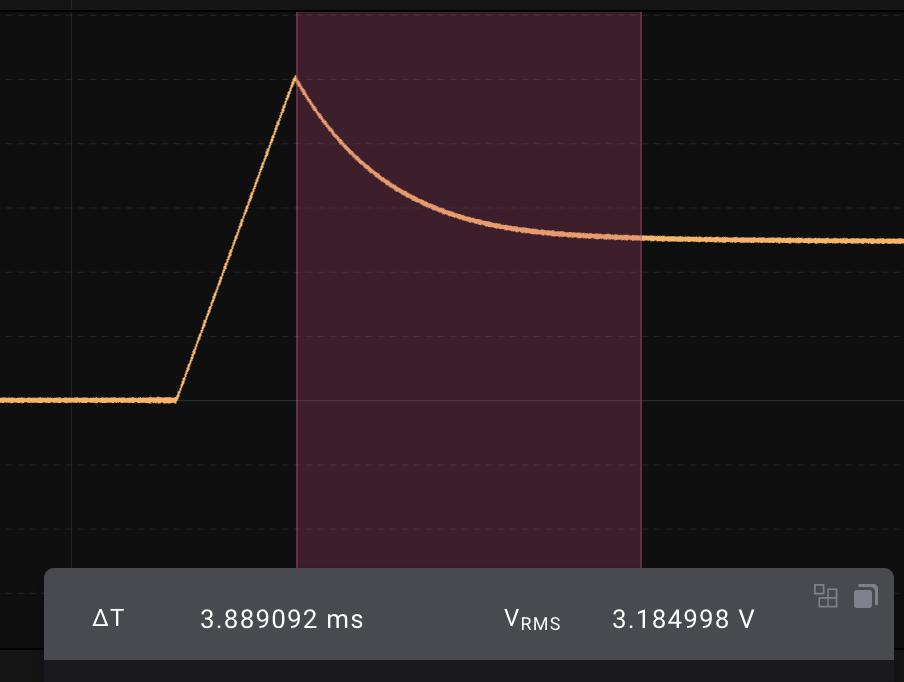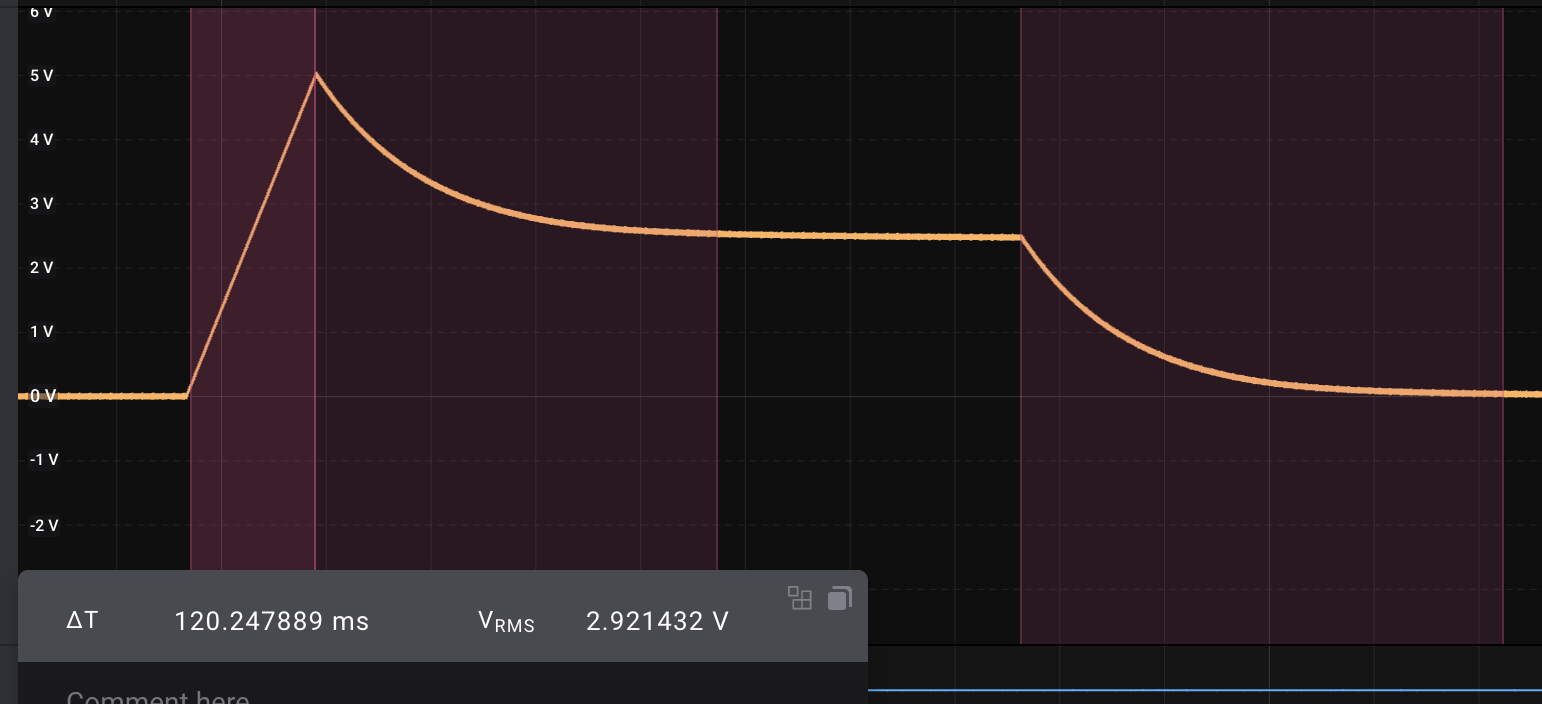Envelope sustain level
I've been trying to make curves to map a linear pot to envelope sustain level. I've added a function that generates a dB-accurate mapping, with adjustable dB range, but I'm having a hard time dialing in a curve I find pleasing so I thought I'd have a look at what the Little Phatty does.
I took 128 measurements of the vol env output on my Little Phatty, one for each midi step. This is the result...
In other words, perfectly linear. I noticed that each step varies somewhat, so it is safe to assume that the internal resolution is much higher than 128.
Also, the pot is linear, midi 63 is straight up etc, so generated CV is 1:1 with the pot position.
The envelope CV feeds an LM13700 based VCA. It is in itself linear, but the control signal circuit may still change the envelope. I will have to simulate this to be certain, but since the envelope is in fact exponential in itself it is a good guess that control is still linear? But if so, the sustain level setting will not be very nice. I'll try that as well.
Update: Here is a plot of midi sustain value vs amplitude of a square wave:
It confuses me. In the beginning the output level increases rapidly, but then as we get higher the rate of change drops. But doesn't perceived loudness work the other way around?
Here is the plot overlaid on a recording of me turning the sustain pot fairly evenly:
It matches well so the curve is absolutely right. And it sounds ok too. In a way, it feels exactly like it looks, starting from the top things change fairly linearly until the pot is halfway (though it doesn't feel like it is HALF the volume. Then it drops much more rapidly.
I tried some new variations on my own synth. a 23dB curve, which (going down) ends at 2319, or 7% of max volume, sounds very linear to me. It is not fully off, so we may need to cap it at the lower end, which is exactly what the Little Phatty curve does - that one seems almost linear 3/4 of the way down. I tried doing something similar but it just doesn't sound good to me. I think I'll stick with the 23dB.
Closer look at envelope shape and times
While I had the LP hooked up I had a look at the envelope outputs.
Shortest attack is 1.3ms, and the attack is linearDecay to center is 3.9ms
Decay to bottom is approximately the same
Decay to 75% too
Release is in the same range, looks like approximately 5ms.
At 15, attack is 3.83ms
At 31, attack is around 12ms, or 10 times the fastest
At 47, attack is 38.3ms
At 63, the envelope looks like this:
Attack is 120ms, decay around 385ms and release around 460ms, pretty much exactly 100 times the fastest.
At 95, Attack is 1.2s and the others are similarly 100 times the shortest. Something interesting to note too is that the envelope keeps dropping even after the initial decay...
In other words, we have exponential growth from 1ms to 10s, quite expected really :)
(The actual transfer function is f(x) = A*10^(x/32), where f(x) is the level, A is the time at X=0 (1.2ms if we cheat a little) and x is the midi value).
The manual says the ranges for all stages are 1 to 10s. It seems that this is not quite correct for decay and release, but attack is definitely close.
One final thing - sample & hold
Oh, and a little thing I noticed while studying the Slim Phatty schematics - Sample and hold buffers use 1nF caps and LF353, multiplexed through DG408s. The signal looks more noisy than what I get, but that is though a long signal cable. The dac is DAC8581, which has a settling time of 0.65uS for a 10V change.












No comments:
Post a Comment